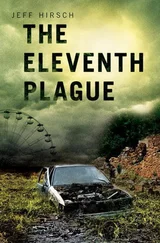Anthony Summers - The Eleventh Day
Здесь есть возможность читать онлайн «Anthony Summers - The Eleventh Day» весь текст электронной книги совершенно бесплатно (целиком полную версию без сокращений). В некоторых случаях можно слушать аудио, скачать через торрент в формате fb2 и присутствует краткое содержание. Жанр: Старинная литература, на английском языке. Описание произведения, (предисловие) а так же отзывы посетителей доступны на портале библиотеки ЛибКат.
- Название:The Eleventh Day
- Автор:
- Жанр:
- Год:неизвестен
- ISBN:нет данных
- Рейтинг книги:3 / 5. Голосов: 1
-
Избранное:Добавить в избранное
- Отзывы:
-
Ваша оценка:
- 60
- 1
- 2
- 3
- 4
- 5
The Eleventh Day: краткое содержание, описание и аннотация
Предлагаем к чтению аннотацию, описание, краткое содержание или предисловие (зависит от того, что написал сам автор книги «The Eleventh Day»). Если вы не нашли необходимую информацию о книге — напишите в комментариях, мы постараемся отыскать её.
The Eleventh Day — читать онлайн бесплатно полную книгу (весь текст) целиком
Ниже представлен текст книги, разбитый по страницам. Система сохранения места последней прочитанной страницы, позволяет с удобством читать онлайн бесплатно книгу «The Eleventh Day», без необходимости каждый раз заново искать на чём Вы остановились. Поставьте закладку, и сможете в любой момент перейти на страницу, на которой закончили чтение.
Интервал:
Закладка:
As filmmaker Naudet had seen, some were killed or terribly injured in the North Tower lobby. It was the 91st floor far above, though, just below the impact point, that became the frontier between certain death and possible, even probable, survival. Above, on levels 92 to 105, were the hundreds of international bankers, the bond traders, investment and insurance managers and their staffs, who regularly came in early to get a jump on the markets. Higher still, near the tower’s summit, were the customers and staff of Windows on the World, the celebrated restaurant atop the Trade Center—and engineers who manned television and radio transmitters.
Of the 1,344 souls on those upper floors, none would survive. Some had died instantly, and hundreds had no way of escaping.
On the 92nd floor, which was intact for a while, debris blocked the stairways. At Carr Futures, John San Pio Resta; his wife, Silvia, seven months pregnant; and trader Damian Meehan were trapped. So, too, was Michael Richards, a sculptor who used studio space on the same floor—an anomaly in a building dedicated to commerce—provided by the Lower Manhattan Cultural Council.
Meehan had time to phone one of his brothers, to tell him the elevators were gone and that there was smoke. His last words were “We’ve got to go,” as he headed for one of the blocked stairways. We know nothing of the last moments of the San Pio Restas and Michael Richards. Richards had last been seen at midnight, saying he planned to work till morning. Long preoccupied with the theme of aviation, his final work had been a bronze of himself amidst flames and meteors, pierced by airplanes.
The area immediately above the 92nd floor was a tomb. Fred Alger Management lost thirty-five people, Marsh and McLennan, spread over several floors, 295. For Marsh analyst Patricia Massari, on the phone to her husband when the plane hit, there had been time only for “Oh, my God!” Then the phone went dead. The remains of one of her colleagues would be found five blocks away.
Cantor Fitzgerald, the bond trading company, had occupied floors 100 to 105. Six hundred fifty-eight people had been in their offices at the moment of impact. Michael Wittenstein had hung up in the middle of a call to a customer, then—courteous to a fault—phoned back to apologize. “I believe,” he had time to say, “there was an explosion in the boiler room.”
Andrew Rosenblum broke into a conversation with his wife to say there had been “a really loud bang,” that he would call right back. When he did, on a cell phone, he said he and colleagues needed air. They had used a computer to smash a window, and his wife heard coughing, gasping for breath. Kenneth van Auken tried to call his wife but got the answering machine. “I love you,” he said. Then again, “I love you very much. I hope I’ll see you later.”
All 658 people at Cantor Fitzgerald would soon be dead. One staffer’s body would be found months later, intact, in his suit and tie, seated upright in the rubble.
From Windows on the World, they used to say, you could see for fifty miles on a clear day. That morning, a very clear one, the seventy-nine greeters, waiters, chefs, and kitchen staff had been busy. Regulars had been at breakfast meetings. In the ballroom, a conference sponsored by the British firm Risk Waters had been about to begin. Guests had been greeted, an audiovisual presentation prepared. Manager Howard Kane, on the phone to his wife, had—inexplicably to her—dropped the receiver at exactly 8:46. She wondered for a moment if her husband had had a heart attack. Then she heard a woman scream, “We’re trapped.” Another man picked up the phone to say there was a fire, that they needed the phone to call 911.
Death came slowly at Windows on the World. The story told by the cell phones showed that customers and staff hurried down a floor, to the 106th, to wait for help. Assistant general manager Christine Olender, who phoned downstairs for advice, was told to phone back in a couple of minutes. To help with the smoke, it was suggested, those trapped should hold wet towels to their faces—difficult, for the water supply had been severed. They got some water from the flower vases, a waiter told his wife.
“The situation is rapidly getting worse,” Olender reported. “What are we going to do for air?” Stuart Lee, vice president of a software company, got off an email to his home office. “A debate is going on,” he wrote, “as to whether we should break a window. Consensus is no for the time being.” Then they did break the glass, and people flocked to the window openings.
Every person still alive on those upper floors, some thirteen hundred feet above the ground, was facing either intense heat or dense smoke rising from below. Some pinned their hopes of survival on the one way out they imagined open to them—the roof.
“Get everybody to the roof,” former firefighter Bernie Heeran had told his son Charles, a trader for Cantor Fitzgerald, when he phoned for advice. “Go up. Don’t try to go down.” A colleague, Martin Wortley, told his brother he hoped to escape by helicopter. People had been taken to safety from the roof in the past. On September 11, two police helicopter pilots arrived over the North Tower within minutes—only to realize that any rescue attempt would be jeopardized by the billowing, impenetrable smoke.
Regulations in force at the Trade Center in 2001, moreover, made it impossible even to reach the roof. The way was blocked by three sets of doors, two that could be opened only by authorized personnel with a swipe card, a third operable at normal times only by remote control by security officers far below. The system did not work on 9/11, for vital wires had been cut when the plane hit the tower. Those hoping to escape knew nothing of this.
Early on, one of the helicopter pilots sent a brief message. “Be advised,” he radioed, “that we do have people confirmed falling out of the building at this time.” In the lobby, a firefighter told filmmaker Naudet simply, “We got jumpers.”
VIEWERS AROUND THE WORLD were by now watching events live on television. At the time, however, few in the United States saw the men and women of the Trade Center as they jumped to certain death. Most American editors ruled the pictures too shocking to be shown.
The jumping had begun almost at once. Alan Reiss, of the Port Authority, would remember seeing people falling from high windows within two minutes. Naudet thought “five, ten minutes” passed before he and those around him heard what sounded like explosions—the sound the bodies made as they struck the ground. “They disintegrated. Right in front of us, outside the lobby windows. There was completely nothing left of them. With each loud boom, every firefighter would shudder.”
In the heat of an inferno, driven by unthinkable pain, jumping may for many have been more reflexive action than choice. For those with time to think, the choice between incineration and a leap into thin air may not have been difficult.
Firefighters had never seen anything on this scale, the sheer number of human beings falling, a man clutching a briefcase, another ripping off his burning shirt as he jumped, a woman holding down her skirt in a last attempt at modesty. Some fell in pairs holding hands, others in groups, three or four at a time. Some appeared to line up to jump, like paratroopers.
At least one jump seemed involuntary. Gazing through a long lens, photographer Richard Smiouskas was watching five or six people huddled together in a narrow window when one figure suddenly fell forward and away. It looked as though he had been shoved.
“As the debris got closer to the ground,” firefighter Kevin McCabe said, “you started seeing arms and legs. You couldn’t believe what you were watching … [then] it was like cannon balls hitting the ground. Boom. I remember one person actually hitting a piece of structural steel over a glass canopy … I remember turning my face away … you’d just hear the pounding … tremendously loud, like taking a bag of concrete and throwing it into a closed courtyard. A loud echo … Boom. Boom …”
Читать дальшеИнтервал:
Закладка:
Похожие книги на «The Eleventh Day»
Представляем Вашему вниманию похожие книги на «The Eleventh Day» списком для выбора. Мы отобрали схожую по названию и смыслу литературу в надежде предоставить читателям больше вариантов отыскать новые, интересные, ещё непрочитанные произведения.
Обсуждение, отзывы о книге «The Eleventh Day» и просто собственные мнения читателей. Оставьте ваши комментарии, напишите, что Вы думаете о произведении, его смысле или главных героях. Укажите что конкретно понравилось, а что нет, и почему Вы так считаете.











